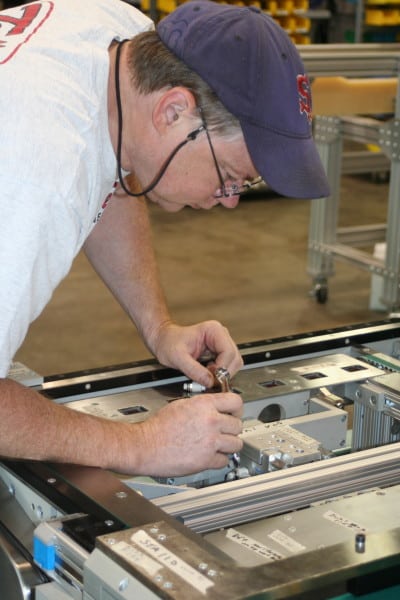Improving OEE (Overall Equipment Effectiveness) is essential to any manufacturing process. As a production management indicator, OEE is used in industry to measure the efficiency of manufacturing productivity. It was developed as a popular manufacturing improvement practice stemming from Lean Manufacturing methods. Lean Manufacturing improvement methodology, and OEE’s function in it, strives to minimize consumption of resources that provide no added value to a finished product.
OEE then, is a key tool for manufacturers and an important metric in TPM (Total Productive Maintenance). It can help managers develop a course of action to be taken to improve overall efficiency, such as prioritizing manufacturing assets, understanding the value of OEE components such as manufacturing automation, and developing the OEE Formula which best fits your company.
OEE in Manufacturing

Ongoing data collection can be selectively applied to measure various aspects of a manufacturing system such as a production line, a machine, or even how one shift performs on one day in relation to another day or how a day shift performs against a second shift, and so on. Any dip or improvement in productivity is revealed in the data collected. For example, the root cause of any downward trend in production can be quickly identified, traced to its source, and corrected. An effective OEE formula of measuring productivity will eliminate waste, identify loss or gain, and establish important benchmarks for progress. It is the best metric to ensure a manufacturer system is working and thus remains profitable.
How to Improve OEE in Manufacturing Applications
Here are three ways that OEE can be applied to achieve a more useful and productive manufacturing process:
Prioritize your goals
When implementing OEE protocols, initial assessment should focus on which assets matter more in the operation of the company. Prioritizing manufacturing assets will help improve manufacturing performance from the start. Further assessments and implementation of OEE standards, whether gradually or in planned stages, can also help realize your goals without too much disruption. The overall goal is to identify problem areas upstream or downstream in the production process that need to be corrected in order to produce better product quality. Improved performance through lean manufacturing methods will reduce associated operating costs and expand profits.
The value of OEE components and automation
Understanding the value of OEE components is another important factor in the manufacturing process. In other words, if your machines are not producing or cannot produce expected quality it can lead to other inefficiencies downstream of production. Many manufacturers introduce manufacturing automation to improve productivity and performance. Automation can:
- Increase production rates
- Utilize materials more efficiently
- Provide better product quality
- Improve employee safety
- Reduce factory lead times
Make sure the OEE formula fits your company
As a key tool and important metric, OEE calculations are only as effective as the formula itself. Every manufacturing operation has a degree of variables that can affect OEE calculations and measurements. Machinery, equipment and production lines may be similar but are not always the same in manufacturing systems. When implementing a lean manufacturing method be sure to adapt to your company’s needs, requirements and expectations.
